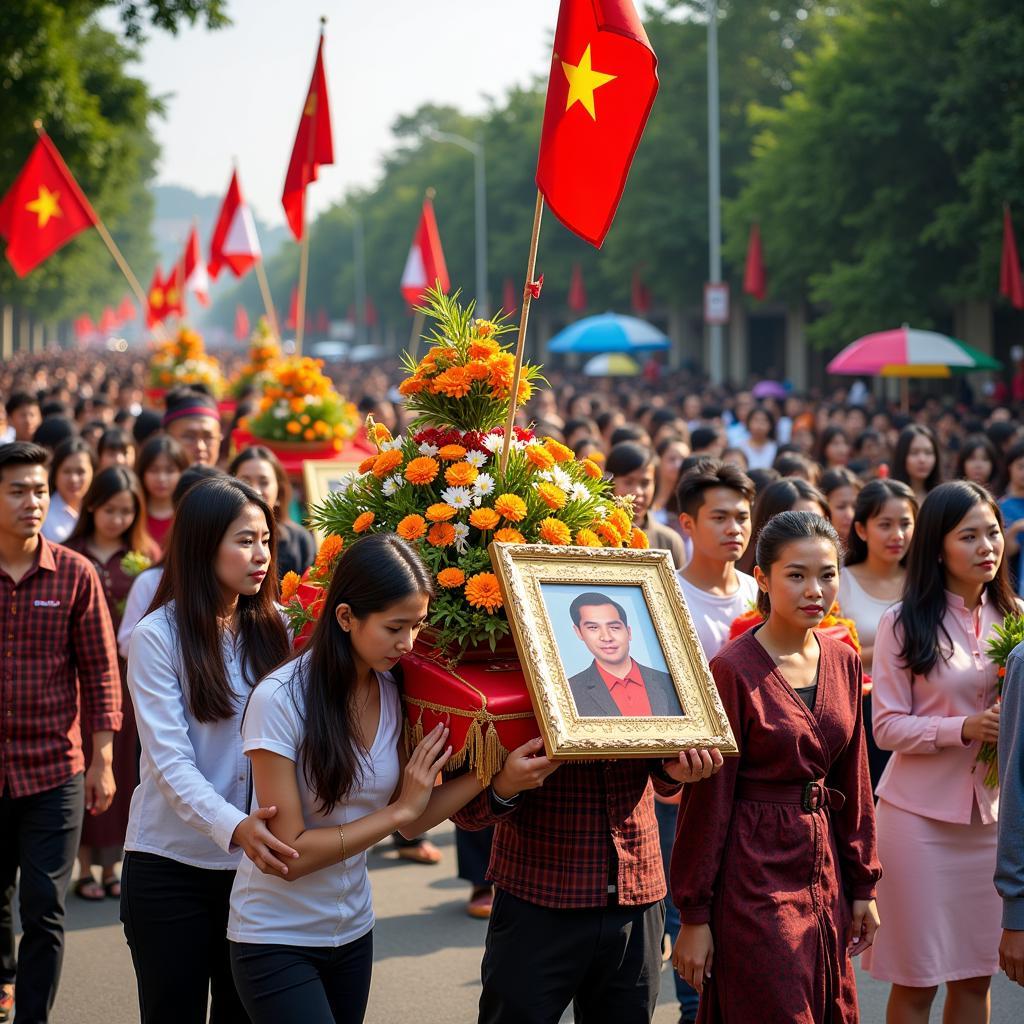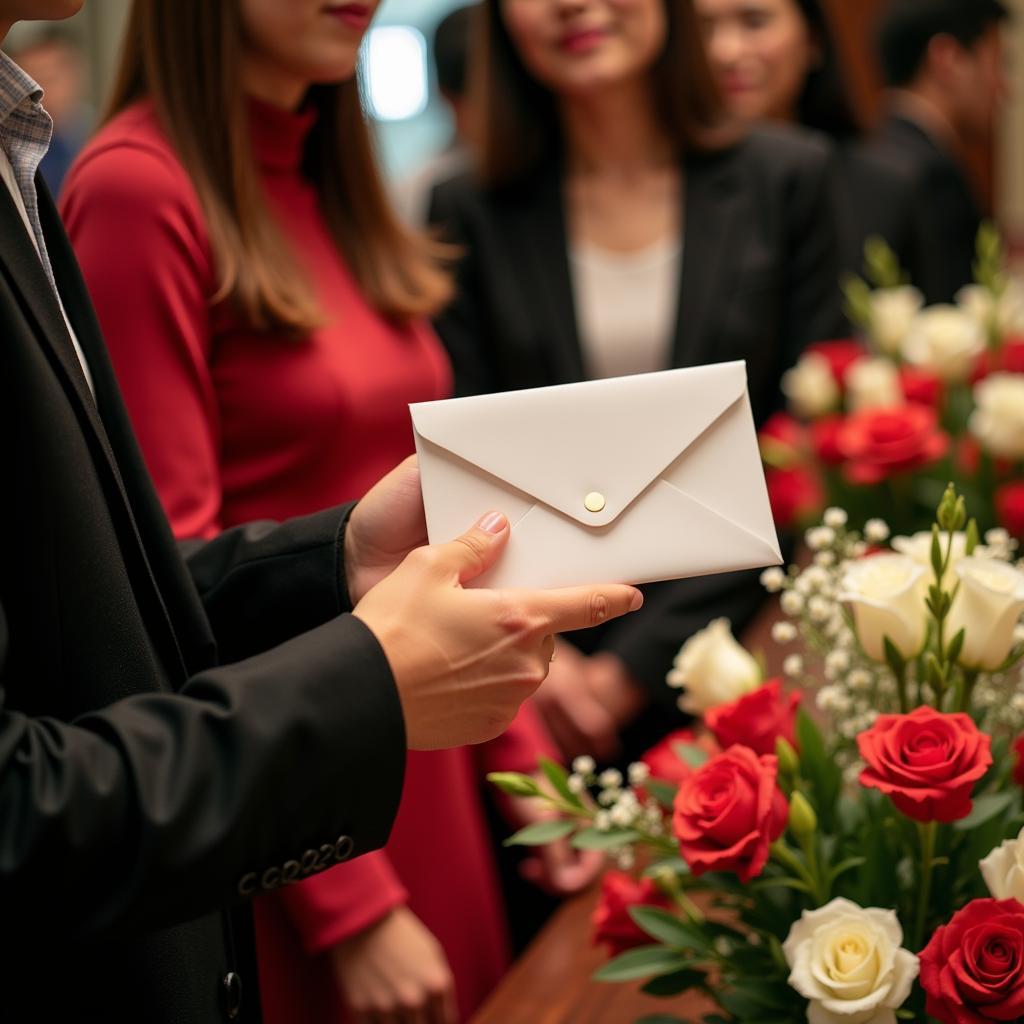Vietnamese funerals are deeply rooted in tradition and respect. Understanding the proper etiquette is essential for showing support and empathy to the grieving family. This guide will walk you through the customs and practices of paying respects at a Vietnamese funeral, ensuring a respectful and meaningful experience.
Understanding Vietnamese Funeral Customs
Vietnamese funerals are a blend of Buddhist, Confucian, and animist beliefs, resulting in a unique set of rituals and practices. These ceremonies are not just about mourning the deceased but also about celebrating their life and ensuring a smooth transition into the afterlife. The process typically involves several stages, from the initial preparation and vigil to the burial and post-funeral rituals.
How to Pay Respects at a Vietnamese Funeral
Paying respects at a Vietnamese funeral involves a series of steps, demonstrating your reverence for the deceased and solidarity with the bereaved family.
- Dress Code: Dress conservatively in dark colors. Black, navy, or dark gray are appropriate choices. Avoid bright colors and patterns. Women should dress modestly, covering their shoulders and knees.
- Arrival: Upon arrival, offer a slight bow to the family and express your condolences. A simple “xin chia buồn” (please accept my condolences) is appropriate.
- Offering Incense: Incense is a significant part of the ceremony. You will be offered incense sticks to light and place in the designated burner. This symbolizes respect and prayers for the deceased’s journey.
- Offering Condolences: A condolence envelope containing money is customary. The amount is not as important as the gesture of support. Present the envelope discreetly to a designated family member.
- Viewing the Deceased: You may be invited to view the deceased. Bow slightly as a sign of respect.
- Participating in the Ceremony: Follow the lead of the family and participate in any chanting or prayers.
- Departure: After offering your condolences, bow again to the family and quietly depart.
Common Questions About Vietnamese Funerals
What should I say at a Vietnamese funeral?
A simple “xin chia buồn” (please accept my condolences) is sufficient and respectful. Avoid lengthy speeches or overly emotional displays.
How much money should I give in a condolence envelope?
The amount is not as crucial as the gesture of support. A modest sum is acceptable.
Is it appropriate to bring flowers?
While flowers are becoming more common, traditionally, they are not a typical offering at Vietnamese funerals. It’s best to stick to the customary condolence envelope.
Key Differences from Western Funerals
Vietnamese funerals often involve elaborate rituals and extended periods of mourning. Unlike Western funerals, which are typically somber occasions, Vietnamese funerals can also include elements of celebration, especially during the post-funeral gatherings.  Traditional Vietnamese Funeral Procession
Traditional Vietnamese Funeral Procession
Navigating the Funeral with Respect and Understanding
Navigating a Vietnamese funeral can feel unfamiliar, but understanding the customs and showing respect is key to offering meaningful support. Remember to dress conservatively, offer condolences sincerely, and follow the lead of the family. By demonstrating cultural sensitivity, you can offer comfort and solidarity during a difficult time.
Conclusion
Paying respects at a Vietnamese funeral is an opportunity to show empathy and support. By following this guide, you can navigate the customs with confidence and offer meaningful condolences to the grieving family. Remember, a respectful presence and a sincere “xin chia buồn” can speak volumes. Learning about these traditions offers a deeper understanding of Vietnamese culture and its reverence for life and the afterlife.  Offering Condolences at a Vietnamese Funeral
Offering Condolences at a Vietnamese Funeral
FAQ
- What is the appropriate attire for a Vietnamese funeral?
- What is the significance of offering incense?
- How long does a Vietnamese funeral typically last?
- What are the common post-funeral rituals?
- Is it appropriate to take photos at a Vietnamese funeral?
- What are some common phrases to offer condolences?
- What is the meaning of “xin chia buồn”?
Situations and Questions
Situation 1: You are attending the funeral of a distant relative whom you haven’t met.
Question: What is the appropriate way to introduce yourself to the family and offer condolences?
Situation 2: You are unable to attend the funeral due to prior commitments.
Question: How can you express your condolences to the family in a meaningful way?
Further Reading
For more information on Vietnamese culture and customs, explore our other articles on TRAVELCAR:
- Exploring Hanoi’s Hidden Gems
- A Guide to Vietnamese Cuisine
- Vietnamese Festivals and Celebrations
Need assistance with transportation to a funeral or other events in Hanoi? Contact TRAVELCAR for reliable and comfortable travel solutions. We offer a range of vehicles, including 16-seater, 29-seater, and 45-seater buses, perfect for group travel.
Call us at 0372960696, email us at TRAVELCAR[email protected], or visit our office at 260 Cầu Giấy, Hanoi. Our customer service team is available 24/7.
